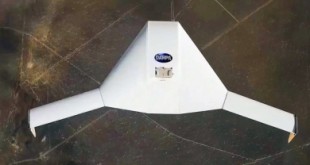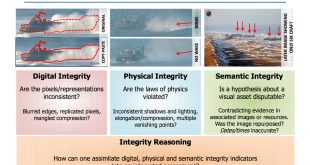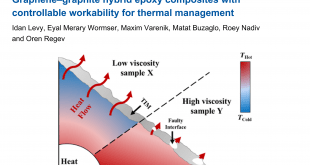The increased commercialization of drones is increasing the risks that these drones can be used by terrorists and criminals. The small drones such as a quadcopter or model airplane are readily available and it is highly probable that existing technology would allow unfriendly forces to retrofit them, giving the aircraft …
Read More »DARPA ICARUS develops self destructing drones that make precise deliveries of critical supplies and then vaporize into thin air
A Chinese navy submarine rescue vessel launched a small boat and seized the US drone which the Pentagon also called an “ocean glider.” The Pentagon said the Chinese ship ignored repeated demands to return the vehicle from the USNS Bowditch. One week later the Chinese government has returned the US …
Read More »Border Agents can fight the Threat of Drug trafficking networks by portable Drug Detection Devices that can identify drugs within seconds
Criminal networks traffic a range of drugs including cannabis, cocaine, heroin and methamphetamine. As international borders become increasingly porous, global abuse and accessibility to drugs have become increasingly widespread. This international trade involves growers, producers, couriers, suppliers and dealers. It affects almost all of our member countries, undermining political …
Read More »US and China tested X-ray pulsar-based navigation and timing (XNAV) on spacecrafts for autonomous and secure space missions
Pulsars are highly magnetized, rotating neutron stars that emit electromagnetic radiation at regular intervals. They radiate energy across a broad range of frequencies, but they are most visible in their X-ray beams. Pulsars emit powerful beams in opposite directions as they spin. These beams are observable only when they’re pointed toward …
Read More »Chaos Engineering tests large complex Cloud based systems by injecting extreme, and turbulent conditions with goal to build more resilient systems
Advances in large-scale, distributed software systems are changing the game for software engineering. Now organizations of all sizes are leveraging the power of the cloud by hosting their data, applications, and services in shared data centers. Despite their extraordinary uptime, services from AWS and Azure can—and do—fail. Data centers …
Read More »Rapid global expansion of Life Sciences, Biotech and health care industry is creating new risks
In general, biotechnology is the utilization of biological procedures for industrial and other purposes, specifically, the genetic management and the manipulation of microorganisms for the production of antibiotic drugs, hormones, and medical devices. The life sciences and healthcare industry as the name suggests is an amalgamation of industries like …
Read More »DARPA Media forensics to detect fake photos and videos on social media to support National Security
In recent years consumer imaging technology (digital cameras, mobile phones, etc.) has become ubiquitous, allowing people the world over to take and share images and video instantaneously. Mirroring this rise in digital imagery is the associated ability for even relatively unskilled users to manipulate and distort the message of the …
Read More »Hyperscale computing increasingly adopted by companies and militaries for Big Data and artificial intelligence applications
Living in an ever-evolving digital era, where data traffic continues to grow by leaps and bounds, organizations across the globe are currently challenged to store, manage and retrieve this massively growing amount of data. To seamlessly respond and cater to this escalating business need, companies are increasingly turning to hyperscale …
Read More »The future of commercial and military aviation is true autonomous flight
Modern commercial airliners have automated systems that can augment or even replace pilots’ performance, managing engine power, controlling and navigating the aircraft, and in some cases even completing landings. One of the goal of future aviation is fully autonomous flight. A fully autonomous aircraft would not require a pilot; it …
Read More »Nanotechnology revolutionizing thermal management solutions in electronics
As computer processors have continued to shrink down to sizes where billions of transistors are on single chip, heat has increasingly become a bigger factor in their performance. If those CPUs did not get as hot in the first place, then much less energy would be needed to keep them …
Read More » International Defense Security & Technology Your trusted Source for News, Research and Analysis
International Defense Security & Technology Your trusted Source for News, Research and Analysis









